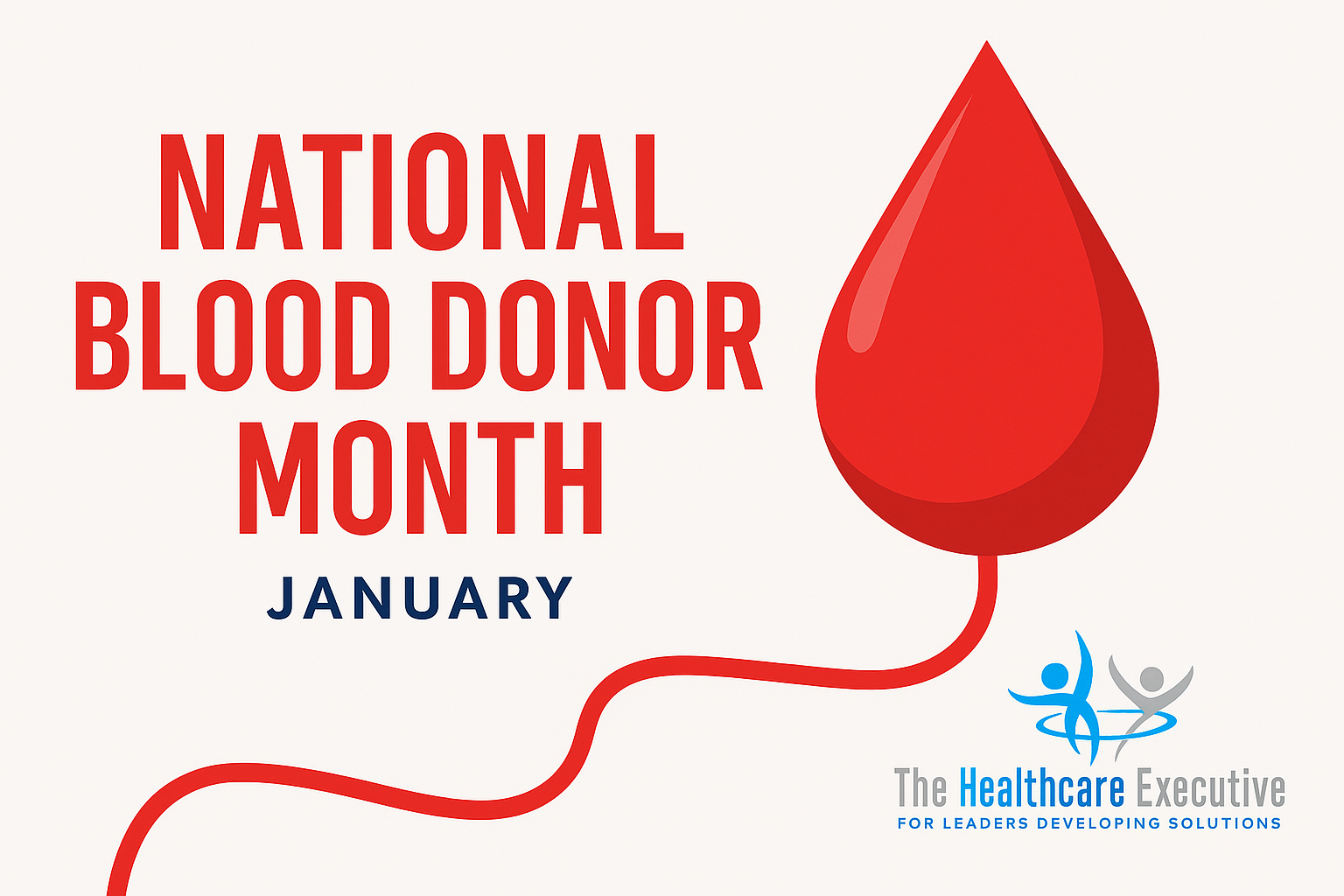National Blood Donor Month 2025: A Lifeline in Hospital Strategy

- Posted by Greg Wahlstrom, MBA, HCM
- Posted in Health Observance Calendar
Why Executives Must Treat Blood Supply as a Strategic Asset
Published: January 07, 2025
Each January, National Blood Donor Month spotlights a quiet but critical component of hospital readiness: the blood supply. In 2025, healthcare leaders must view blood donation not just as a public service campaign—but as a strategic imperative. National shortages are increasingly common, driven by donor attrition, climate disruptions, and rising demand for trauma and oncology services. For hospital executives, sustainability of the blood supply now touches operations, clinical care, and public trust.
HonorHealth in Arizona recently redesigned its donor engagement model, integrating mobile units into their population health framework and aligning with regional disaster response planning. These innovations have helped buffer supply chain shocks during summer wildfire seasons. Executives should review how their health system’s community benefit goals can strengthen local donor networks. The more resilient the outreach, the more reliable the readiness.
Data integration is a key enabler. Using predictive modeling, healthcare systems can forecast blood usage spikes based on scheduled procedures, demographic shifts, or regional trauma risk. NorthShore University HealthSystem, for instance, leverages EHR data to optimize inventory and coordinate with local blood banks. This turns inventory planning into a leadership function—not just a lab responsibility.
Equity also plays a role. The American Red Cross highlights that rare blood types are more common among certain racial and ethnic groups, but these communities are underrepresented among donors. Executives must ensure that outreach includes multilingual education, culturally relevant donor drives, and visibility in historically underserved neighborhoods. Equity in blood donation creates equity in patient care.
Hospital finance leaders should also note: blood shortages can delay surgeries, increase length of stay, and complicate trauma management. These effects carry real cost. AABB data shows that even a two-day shortage can impact 30% of scheduled care. CFOs must engage with donor strategy as a risk mitigation tool—and align it with value-based metrics.
Innovation can support sustainability. From pathogen-reduction technologies to wearable hemovigilance trackers for high-volume donors, the future of blood banking is digital. AdventHealth has begun piloting a blockchain-supported chain-of-custody tracker to ensure timely, secure transfusion delivery. Digital transformation must extend beyond clinical workflows—it includes blood logistics, too.
Compliance and regulation are evolving. In 2024, the FDA updated guidelines on donor deferrals, impacting eligibility criteria across the country. Legal and compliance teams must align with clinical operations and public relations to ensure transparent community messaging. Hospital leaders must ensure regulations don’t create confusion or discourage participation.
Internal culture also matters. At UCHealth, an internal donor recognition program includes wellness incentives and employee spotlight stories tied to quarterly blood drives. These efforts humanize donation and build a culture of giving from within. Executive teams should lead by example—and show visible commitment.
What’s your system’s strategy for securing its blood supply in 2025? Hospital leaders must shift from reactive shortages to proactive stewardship. Aligning donor engagement with operational risk is no longer optional—it’s essential.
Discover More on Strategic Climate Readiness
As hospitals face growing external disruptions, learn how climate-conscious design, energy resilience, and sustainability strategy are becoming core to executive planning. This post connects infrastructure with real-time risk.
Internal Links
- Green Hospitals: Leading the Way in Climate-Conscious Healthcare
- The Great Health System Shakeup: Mergers, Consolidations, and What’s Next



